The Writers' Trial
Even before the Nazi Party took power, annual Rallies took place in Nuremberg between 1927 and 1929. Their affinity for Nuremberg drew on the historical background. In the Middle Ages, the German Emperor was required to hold a Reichstag in Nuremberg at least once a year.
With the Nazi takeover in 1933, there were no limits to their megalomania. No expense or effort was spared to quickly construct a suitable site for the annual Party Rallies. Of the various parade grounds, only the Zeppelin Field with its main grandstand was fully completed. A barracks was built for the SS, a housing complex for the workers, a transformer station, a KdF city, and a camp. A German Stadium, March Field, a House of Culture, a Congress Hall, the Luitpold Hall, and the Luitpold Arena were also planned along the Grosse Straße.
For the monumental German Stadium, a model was specially built in the Hischbach Valley in the Fränkische Schweiz to test the inclination of the stands and the acoustics. Only the foundation pit of the stadium itself was excavated by the end of the war. Filled with water, it can now be admired as the Silver Lake – a dangerous body of water where swimming is prohibited, as several attempts have resulted in death.
Of the buildings, the remains of the Zeppelin grandstand are still used today for events such as car races and rock concerts. Over the years, parts that had become dilapidated were gradually removed. The never-completed Congress Hall serves as the site of a documentation center on the rise, effects, and fall of the dictatorship.
There is probably no more ingenious idea to ridicule a fascist building than using it as an advertising space for a cheap supermarket: the Zeppelin Grandstand
The site was connected to the national rail network through the expansion of the Nuremberg-Dutzendteich, Nuremberg-Langwasser, and Fischbach train stations. The planned Märzfeld station was never completed. The station buildings constructed at that time still stand, but have fallen into the decay usual at Deutsche Bahn.
Despite the incomplete setting, the Nazi Party Rallies were held in Nuremberg from 1933 to 1938. This put the city, which the party had declared its favorite, in the spotlight of the increasingly successful Allied air raids. At the end of the war, Nuremberg's old town was bombed to rubble and 90% destroyed.
After the war, a location was sought to settle the accounts with those responsible for the tragedy. The United States demanded that the trial take place in its zone. In addition to the symbolic significance of Nuremberg, which the Nazis seized upon, another argument in favor of the location was that, despite the almost complete destruction of the old town, an intact prison and courthouse remained, which could serve as a venue for the delinquents and as a venue for the trials.
Entrance to the court building
Already since 1868, Bavaria's first prison with cells was located in Nürnberg’s Fürther Straße. To create more space the Bavarian parliament decided in 1907 to establish a central Palace of Justice on a state-owned plot next to the prison. In September, 1916 the new Palace of Justice was inaugurated by the last Bavarian King, Ludwig Ill. Room 600 was the largest court room used by the criminal court to deal with major crimes such as murder.
The first prisoners arrived in Nuremberg in August 1945. They were housed in the east wing of the prison adjacent to the courthouse. Important witnesses and defendants in subsequent trials lived in the other wings. Strict security regulations applied. Communication between the defendants and personal contact with the guards was prohibited. The only personal connection to the outside world was the defense attorney. Private visits were not permitted, and family contacts were limited to one letter per week. Two German doctors, an American psychologist, and two psychiatrists took care of the prisoners.
Court room 600
In preparation for the trial, Courtroom 600 was remodeled. An additional raised platform for reporters and observers was built on the visitors' side. Only six of the 250 seats were reserved for German reporters. The Russians ceded another five of their own seats to German press representatives from their zone. From there, they could see the bench with the defendants on the left and the tribunal of judges against the backdrop of the national flags on the right. The USSR appointed Iola T. Nikitchenko as judge, the United Kingdom appointed Jeffrey Lawrence, the United States appointed Francis A. Biddle, and France appointed Henry Donnedieu. Each country was also represented by a chief prosecutor. The most important of these was the American prosecutor Robert H. Jackson, who also delivered the opening statement on November 20, 1945. No Germans participated in the trial.
The "Main War Crimes Trial" lasted until October 1, 1946. The defendants in the main trial were 24 major war criminals, Rudolf Hess, Hitler's representative, Joachim von Ribbentrop, Foreign Minister, Wilhelm Keitel, Wehrmacht High Command, Erich Raeder, Chief of the Navy, Hermann Göring, Reich Air Minister and Hitler's designated successor, Karl Dönitz, Commander of the submarine fleet, Baldur von Schirach, Reich Youth Leader, Ernst Kaltenbrunner, Chief of the Security Police, Fritz Sauckel, Gauleiter, Alfred Rosenberg, Ideologist and Minister for Occupied Eastern Territories, Alfred Jodl, Wehrmacht High Command, Hans Frank, Governor General of Poland, Franz von Papen, former Reich Chancellor, Wilhelm Frick, Minister of the Interior, Arthur Seyss Inquart, Governor of the Netherlands, Julius Streicher, Gauleiter of Franconia, Albert Speer, Architect and Minister for Armaments, Walter Funk, Minister of Economics, Konstantin von Neurath, Foreign Minister, Hjalmar Schacht, President of the Reichsbank, Hans Fritsche, chief commentator on German radio, as well as seven groups and organizations classified as criminal. Also charged in absentia were Robert Ley, Gustav Krupp von Bohlen, and Martin Bormann.
The basis for the proceedings were attempts, which had begun in the mid-19th century, to standardize and "civilize" war, which was increasingly being waged with industrial means, through international agreements. The Geneva Conventions of 1864 and 1906 were intended to subject war to "the laws of humanity and the dictates of public conscience" (Henri Dunant). At the Hague Conferences of 1899 and 1907, representatives of 44 states developed a comprehensive program for maintaining peace, rules of conduct in the event of conflict, and norms for land and naval warfare.
Unfinished interior of the congress hall
There were four charges: criminal conspiracy to unleash a war of aggression, crimes against peace, the commission of war crimes, and crimes against humanity. Only crimes committed against other nations were considered. Acts of violence by Germans against Germans were not brought to trial. Strict care was taken to conduct a fair trial according to Anglo-American procedural rules, including the prosecution, evidence, and defense, to avoid the impression of arbitrary revenge by the victors. To this end, the prosecution and defense collected and presented evidence, and heard the testimony of numerous witnesses.
For example, the defense led to an acquittal on the charge of German submarine warfare. Since it was proven that civilian ships were also armed and used for war purposes, the commander of the German U-boat fleet, Dönitz, finally got away with 10 years of imprisonment.
The Nuremberg trials were also a milestone in the development of simultaneous interpretation. The four different languages of the prosecution and judges, as well as German in the case of the defendants, required rapid translation. Simultaneous interpreting was used on a large scale for the first time during the Nuremberg trials, although German, due to the different sentence structures, it caused particular difficulties and also led to corresponding errors. Yellow and red lights at the speaker's podium were used when the translation required a speed adjustment. All conversations were recorded.
While, after the rebuilding, the courthouse could be used for the trial without any problems, accommodating the many military and civilian personnel posed a logistical challenge. More than 90 percent of Nuremberg's old town was destroyed. The accommodation issue was therefore resolved by confiscating intact buildings.
Prominent visitors, such as Marlene Dietrich working briefly as a correspondent, stayed in the relatively intact Grand Hotel on the square in front of Nuremberg's train station. But the trials were also a media event. Therefore, a location was sought where writers and journalists could be accommodated. The grounds of the enormous castle of the pencil baron Faber-Castell in the Nuremberg suburb of Stein were requisitioned for this purpose.
Art-deco decoration in the bar of the Grand Hotel
The Pencil Castle was built in 1906 in the historicist style of a medieval castle. In addition to the accommodations, it also included two dining rooms and what would today be called joined workspaces. There were many complaints about the food served there.
Entrance to the Faber Castell castle
The castle was surrounded by extensive English-style parkland, which also included a villa, outbuildings, and, among other things, a mausoleum for members of the Faber-Castell family and a lake with an island containing imitation ruins. The villa was used as accommodation for the wives and married couples among the reporters.
The villa used for female writers and families
There was a high turnover among those present. The list is impressive and includes Erika Mann, Alfred Döblin, Erich Kästner, Willy Brandt, Markus Wolf, John Dos Passos, Ilja Ehrenburg, Rebecca West, Martha Gelhorn and Golo Mann,. Even at the time less significant parts of the world were represented, such as China by Qiao Xian, or Cuba by the con man Walter Ullmann, alias Jo Lherman, or Dr. Gaston Oulman. The Jewish Holocaust survivor Ernst Michel sat there as a reporter, facing his tormentors. Many of the formerly German writers were now in Nuremberg with foreign passports; for example, Erika Mann worked as a correspondent as an American military member, and Willy Brandt had a Norwegian passport.
After the intervention by the Russian secret police the Russians remained in a separate building across the street.
After the somewhat comfortable accommodations the press representatives had previously enjoyed during the final years of allied military advance, the Pencil Castle was a disappointment. Some had to sleep in dormitories with 10 camp beds. Telephone connections were scarce; for example, Norwegian correspondent Wily Brandt had no connection to Oslo. Long lines often formed in front of the restrooms. Concentrated work was also almost impossible in the cramped conditions of the castle's workrooms.
"When you think of life in a castle, you imagine something other than sleeping bags and camp beds. But it fits the classification of a war correspondent quite well." Willy Brandt
Ruined mausoleum in the park
But there were also pleasant moments. Chess tournaments and dances were held in the palace, and Markus Wolf, who had a Russian passport, learned to play poker there. Alcohol was always indispensable. Markus Wolf also met Willy Brandt there, whom he would bring down many years later as Chancellor through his activities as head of the GDR security service.
Behind the palace and park were the extensive grounds of the Faber-Castell pencil factory.
Count Roland von Faber-Castell had taken over management of the company from his late father at the age of 23. However, since he was not a member of the Nazi Party, he soon had to accept that he had to report to a managing director appointed by the party. Count Roland was attacked for not encouraging his employees to join the SA or SS. Even worse was that he was married to a Jewish woman. Once the entrance to the palace was decorated with the slogan "Oppenheim (his wive), the Jewish swine, must be removed from Stein." The marriage soon ended in divorce. During the war, Count Roland was a tank commander in Poland and refused to shoot 500 Jews. He was nearly sentenced by the Nazis for this. Later, he was lucky again when he contracted typhus on the way to Stalingrad and was sent home. He was no longer allowed to live in the castle for security reasons, but was able to retreat to his hunting lodge in Dürrenhembach, just outside Nuremberg. After 1945, the hunting lodge became an exclusive resort for privileged members of the press.
Between 1874 and 1890, Lothar von Faber purchased extensive land holdings in the region between Schwarzenbruck, Allersberg, and Roth. The area was reforested, and a hunting lodge with outbuildings was built in Dürrenhembach, which is still owned by the family today. Many years ago, long excursions were still a luxury, and so we often visited Dürrenhembach as children because my father was friends with the gardener, who, ironically, was named Gräf.
The hunting lodge is surrounded by vast forests. Fish ponds attract waterfowl. A game reserve with semi-tame local game is still a popular attraction for visitors. During the week, you hardly see any other people. The buildings from the early days have all been preserved, are listed as historical monuments, and have been perfectly renovated. The count's family still operates agriculture and forestry there.
It's hard to imagine that after the war, this tranquil rural idyll was home to lavish celebrations, which even led to an affair between the local Countess Katharina and one of the Nazi key witnesses.
But the castle in Stein and the hunting lodge in Dürrenhembach were apparently not enough for pencil manufacturer Lothar von Faber. Therefore, between 1883 and 1885, a two-story manor house with an enormous round tower in the Neo-Renaissance style was built in Schwarzenbruck. This castle now serves as a retirement and nursing home.
Until the 16th century, Leonardo da Vinci and Albrecht Dürer still drew their masterpieces with lead-based pencils, hence the name "Bleistift" in German. The disadvantage was that lead released very little color, so artists had to press hard to transfer their strokes to paper. The tradition of pencil production in Nuremberg dates back to at least 1662. At that time, Friedrich Staedtler (1636-1689) was mentioned in the city's annals as a "lBleyweißstefftmacher". His grave can still be admired today in Nuremberg's medieval Rochus Cemetery. Whether the decoration with a lead pencil had already existed more than 400 years is doubtful.
As early as 1550, graphite was used as "black lead" for pencils in Borrowdale, England. However, it was extremely brittle. The solution was to mix it with clay. The mixing ratio allowed different degrees of hardness to be achieved for the pencils. The pencil makers of that time came from the carpentry trade and initially placed graphite sticks loosely in a holder during pencil production. However, Friedrich Staedtler came from a family of gold and silver wire cutters and was the first to begin gluing the graphite sticks to the wooden casing.
Due to the medieval trade regulations, Nuremberg's pencil makers lagged far behind in the development of the industry. Pencil making was one of the restricted trades, meaning apprentices, journeymen, and master craftsmen were not allowed to leave the city without permission from the city council. This was intended to prevent contemporary production techniques from escaping the city walls. However, this also prevented any technical innovations from entering the city. It wasn't until 1785 that the trade regulations were relaxed. Mills along the river could be used for grinding graphite and for woodworking.
Ende des 19. Jahrhunderts gab es in Bayern 26 kleinere und größere Bleistiftfabriken. Allein 23 davon hatten ihren Sitz in Nürnberg und Umgebung. 1906 wurden mit 4.000 Arbeitenden 400 Millionen Bleistifte hergestellt. Dazu kamen 6000 Mitarbeiter bei Zulieferbetrieben wurde mit 6.000 Personen beziffert. Vor dem Zweiten Weltkrieg gab es elf Bleistiftfirmen in Nürnberg. Firmen wie Staedtler, Faber-Castell, Lyra oder Schwan-Stabilo probieren hier noch heute.
Today, the area surrounding the Writers' Castle has degenerated into a typically German suburban dreariness. Faceless apartment blocks alternate with parking lots, rows of garages, and Penny shopping paradises. Cheap metal barriers, fences, and prohibition signs dominate the scene.
Gated community for garbage bins
I would have loved to ask who here still realizes the significance of this monumental castle for the development of international law and as a home to a host of international writers. Even in fine weather, however, you hardly see anyone on the street here. They disappear directly from their cars into the doorways. If you walk past the residential buildings, you'll see suspicious faces directed at the stranger with the camera. If you return the gaze, the curtains quickly close again.
Eventually 12 of the defendants were sentenced to death by hanging, 7 to imprisonment between 10 years and life time and the remainder were acquitted. After the main trial, 12 further trials followed before US military tribunals between 1946 and 1949.
Cemetery chapel at the Rochus cemetery
The war crime trials were intended to be conducted according to generally accepted, recognized legal rules. It was intended to avoid any impression of an act of revenge. However, the differing verdicts in the main trial compared to the sudden willingness to show mercy in the follow-up trials demonstrate that the law can be bent according to the will of those in power. Since the former ally, the Soviet Union, had become the new enemy after 1945, they preferred a strong and reliable Germany within their own camp. Therefore, most of the defendants in the follow-up trials, such as the managers of IG Farben, Krupp, or the Flick Group, members of the Nazi judicial system, and even SS officials responsible for mass shootings, were released after a relatively short time, even if they were sentenced to short prison terms or even to death.
Rochus cemetery
The historical and international legal significance of the Nuremberg Trials was long underestimated. Critics described the trials as victors' justice. It was criticized that the procedural practice contradicted an established legal principle that laws cannot be enacted based on the facts of the case. Another major point of criticism was that no Germans were involved in the proceedings. However, it was seen that after the end of the war in 1918, a war crimes trial was held before German courts, which led to no conclusion. There was never any doubt about the guilt of the defendants. The extent of the crimes was so horrific that any idea of a meaningful defense seemed questionable.
Rochus cemetery
Memories of the trial faded over the years. After the trials ended, the Bavarian judicial administration restored Courtroom 600 to its original state, and the enlarged press gallery was removed.
In Nuremberg, with the International Military Tribunal, the idea of a "world criminal court" was implemented for the first time. The basic principles developed at the time were then adopted as the
"Nuremberg Principles" and became the basis for modern international criminal justice.
The Frauenkirche (Church of Our Lady) on Nuremberg's main market square was built to house the imperial insignia. The city wanted to use it to thank Emperor Charles IV for allowing them to clear the Jewish ghetto located on this site. Hundreds of Jewish residents fell victim to the pogrom.
PRINCIPLE I
Any person who commits an act that constitutes a crime under international law is responsible for it and subject to punishment.
PRINCIPLE II
The fact that domestic law does not provide for a punishment for an act that constitutes a crime under international law does not exempt the person who committed that act from responsibility under international law.
PRINCIPLE III
The fact that a person committed an act considered a crime under international law as a head of state or official does not exempt that person from responsibility under international law.
PRINCIPLE IV
The fact that a person acted on the orders of their government or a superior does not exempt that person from responsibility under international law, provided that they had a genuine opportunity to make a moral choice.
PRINCIPLE V
Everyone charged with a crime under international law has the right to a fair trial according to the facts and the law.
PRINCIPLE VI
The following crimes are punishable as crimes under international law:
a) Crimes against peace:
i) Planning, preparing, initiating, or waging a war of aggression or war in violation of international treaties, agreements, or assurances;
ii) Participating in a common plan or conspiracy to carry out any of the acts referred to in subparagraph (i).
b) War crimes: Violations of the laws or customs of war, including, but not limited to, murder, ill-treatment, or deportation to slave labor or for any other purpose of members of the civilian population of or in occupied territory, murder or ill-treatment of prisoners of war or persons on the high seas, killing of hostages, plunder of public or private property, wanton destruction of cities or villages, or any devastation not justified by military necessity.
c) Crimes against humanity: murder, extermination, enslavement, deportation, or other inhumane acts committed against a civilian population, or persecution on political, racial, or religious grounds, when such acts or persecution are committed in execution of, or in conjunction with, a crime against peace or a war crime.
PRINCIPLE VII
Participation in the commission of a crime against peace, a war crime, or a crime against humanity within the meaning of Principle VI is a crime under international law.
Many of these points would be legal charges that could be applied to many contemporary politicians. One charge that is clearly missing is the provision and distribution of weapons that can be used to carry out any of the above-mentioned criminal acts. This could fundamentally criminalize international arms production and also criminalize the profitable industrial production of weapons of destruction.
As a final consequence of the Nuremberg trials, the Rome Statute was passed in 1998. It led to the formation of the International Criminal Court (ICC) in The Hague in 2002. It fulfilled the demand for a permanent legal authority for international criminal law, although not all states have submitted to the jurisdiction of the ICC. International criminal law has also become part of national legislation, such as in Germany, where the relevant crimes (genocide, crimes against humanity, war crimes) have been codified in the International Criminal Law Code since 2002.

One way to reach the suburb of Stein is the fully automated and driverless Nuremberg Metro, shown here at the Röthenbach terminus. The connecting bus stops directly in front of the castle.
This also changed the perspective on the venue of 1945. The number of visitors from Germany and abroad increased. Since 2010, the Nuremberg Trials Memorial has commemorated the significance of the trials as a milestone in international criminal law and as a synonym for the end of impunity for war crimes and crimes against humanity.
If you use the S-Bahn to Stein station, you also have the pleasure of inspecting the suburbs
Sources:
Uwe Neumahr, Das Schloss der Schriftsteller, C.H.Beck, 2023
Memorium Nuremberg Trials, The exhibition, catalogue
https://www.nuernberginfos.de/industrialisierung-in-nuernberg/bleistiftindustrie.php https://schwarzenbruck.de/faberschloss/
Informationspanele Memorium Nürnberg trials
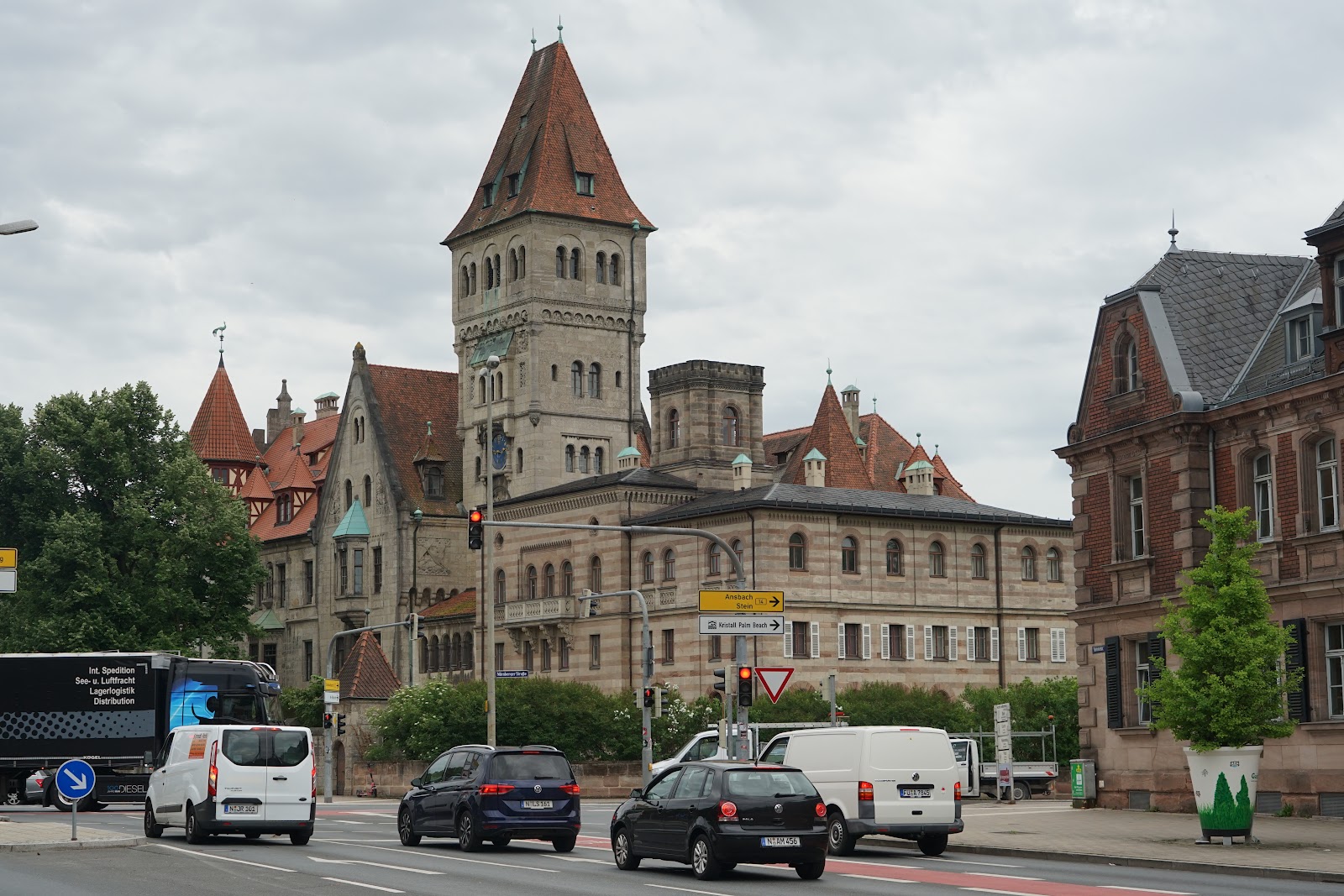

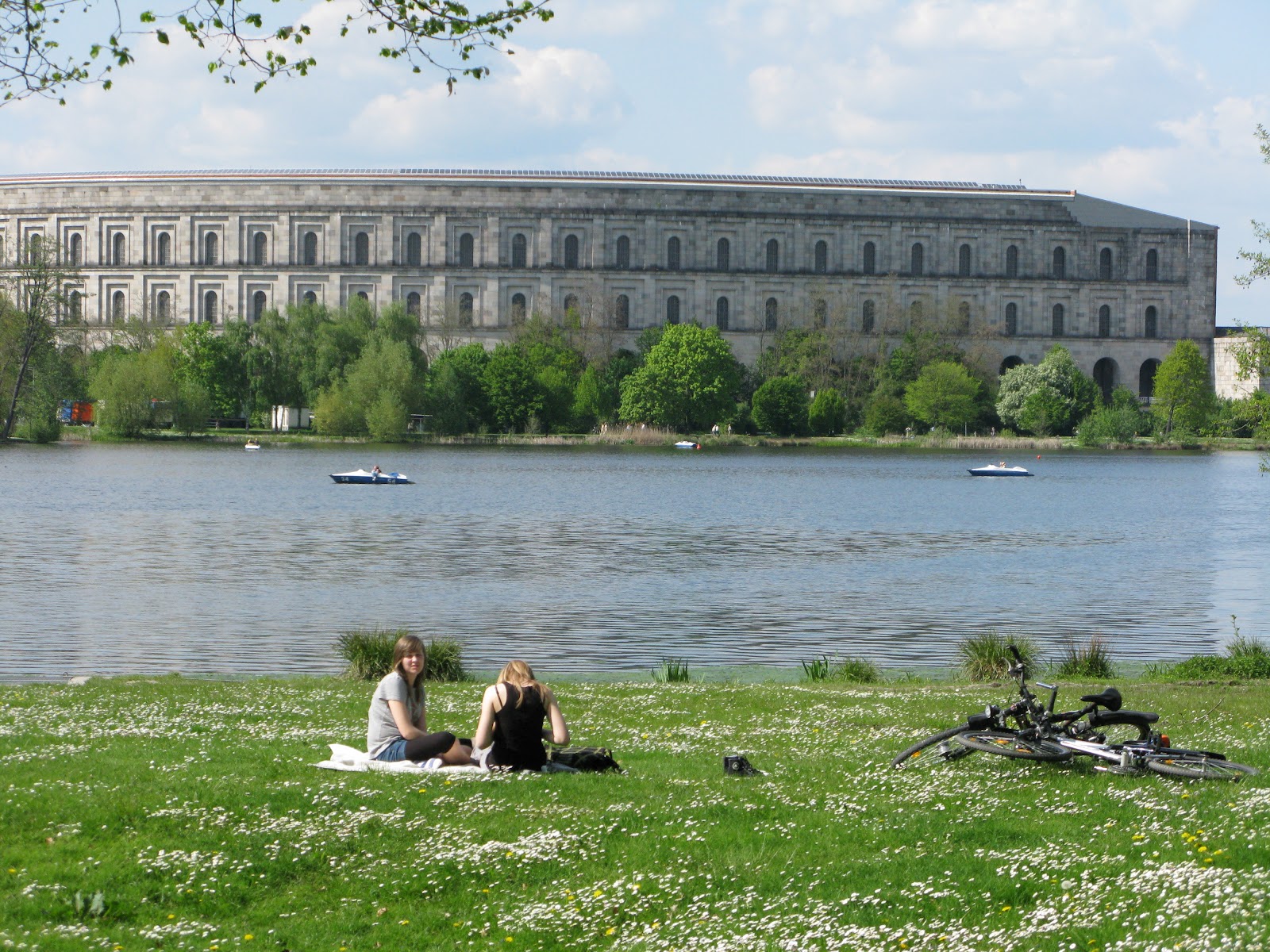




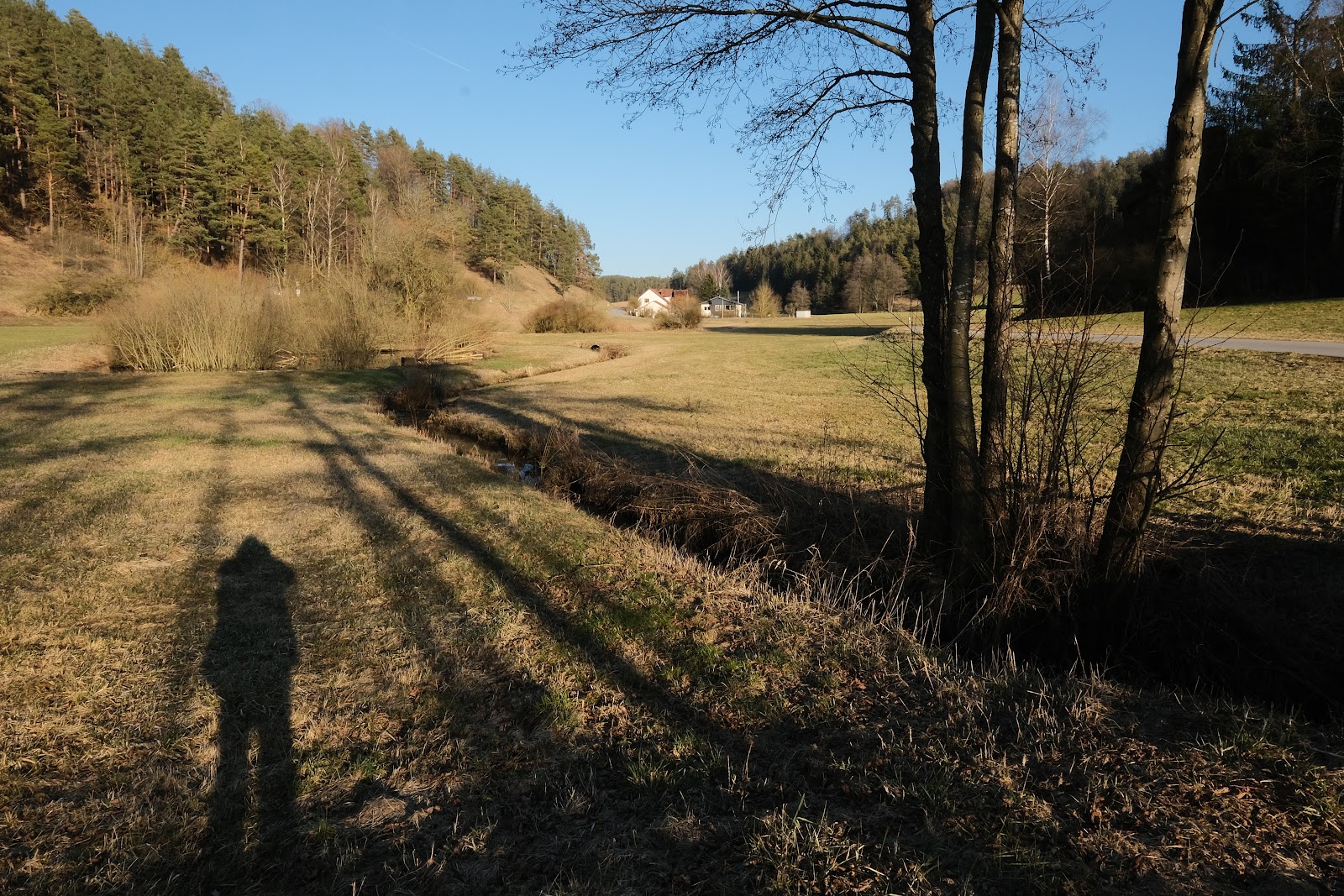

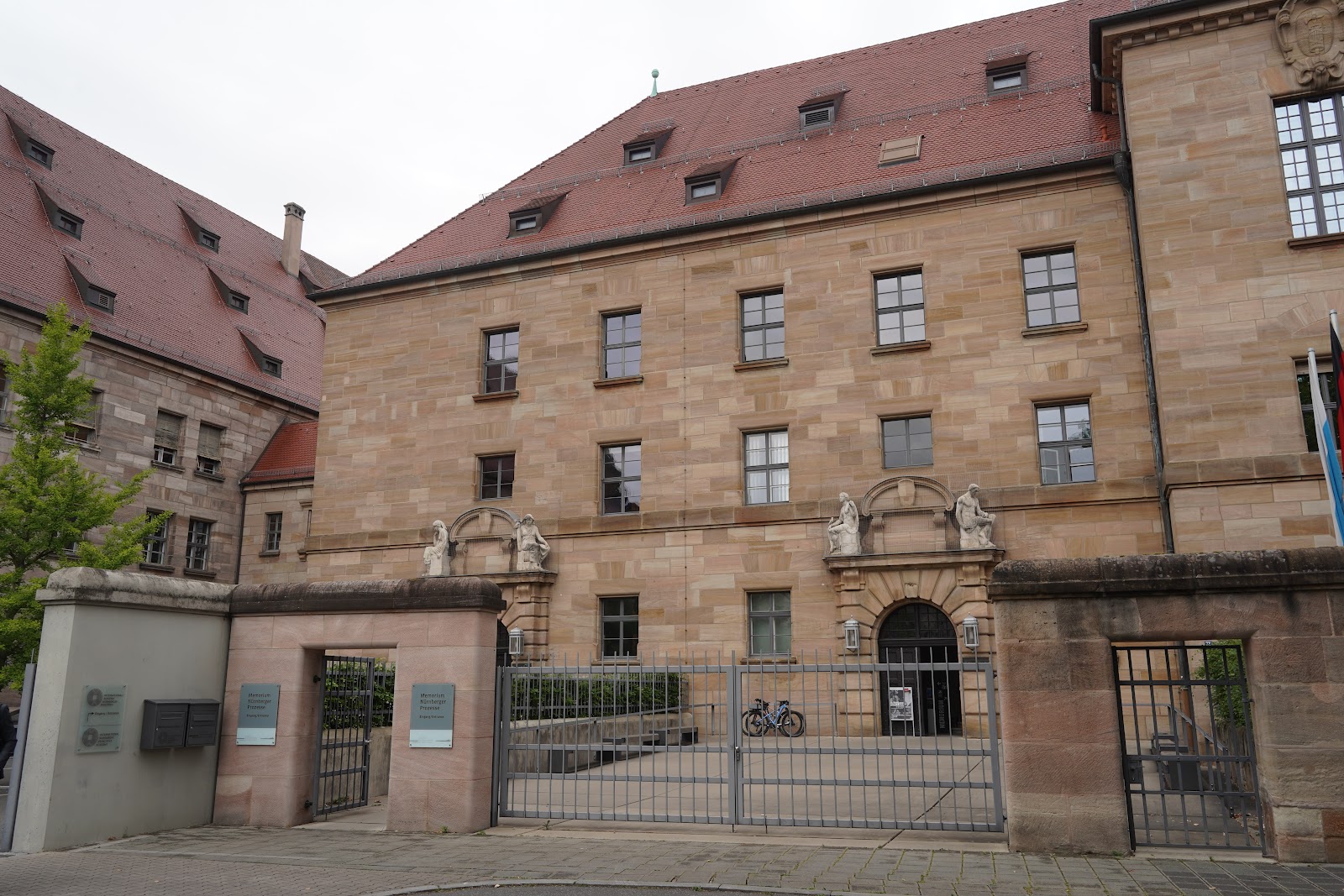















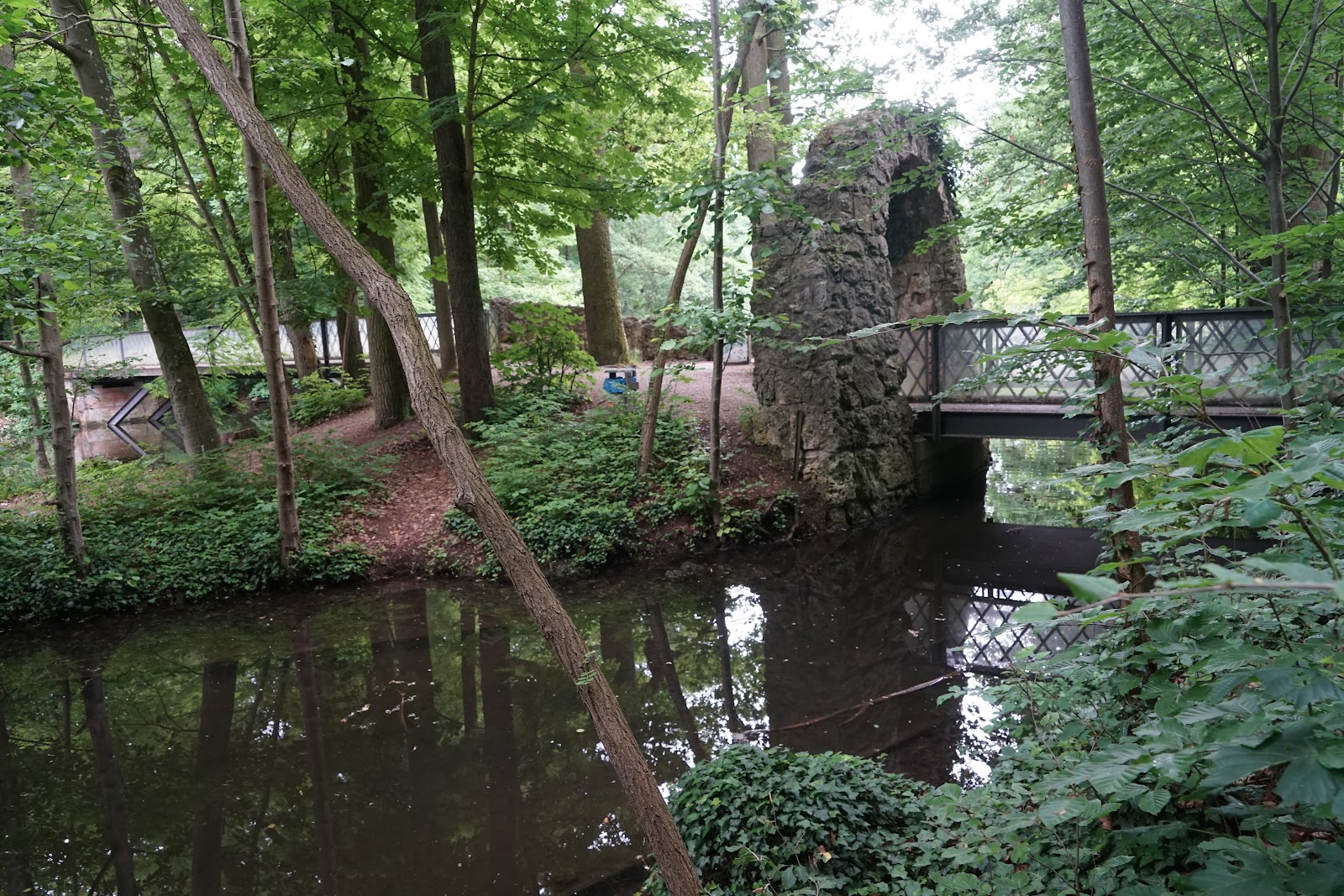



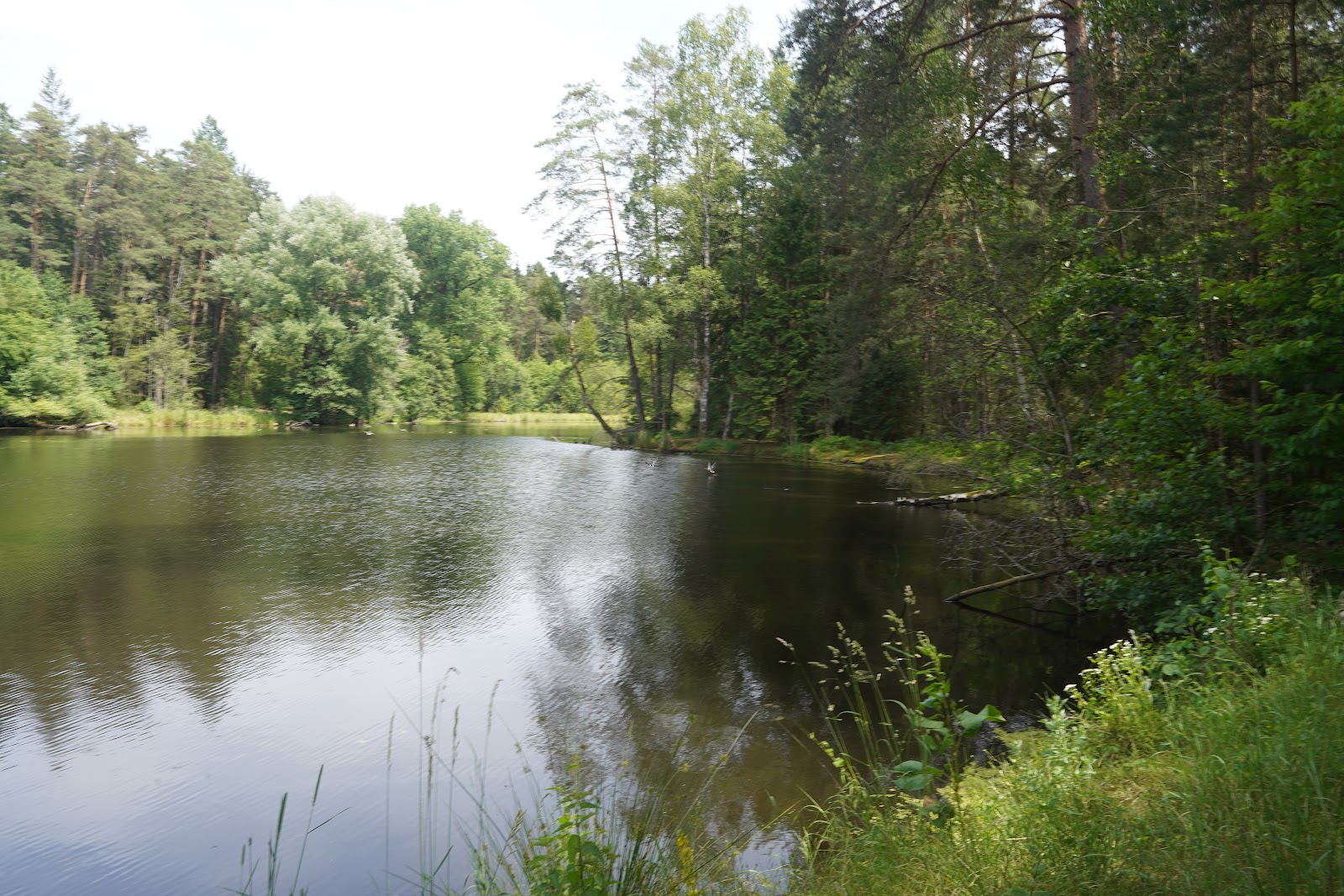



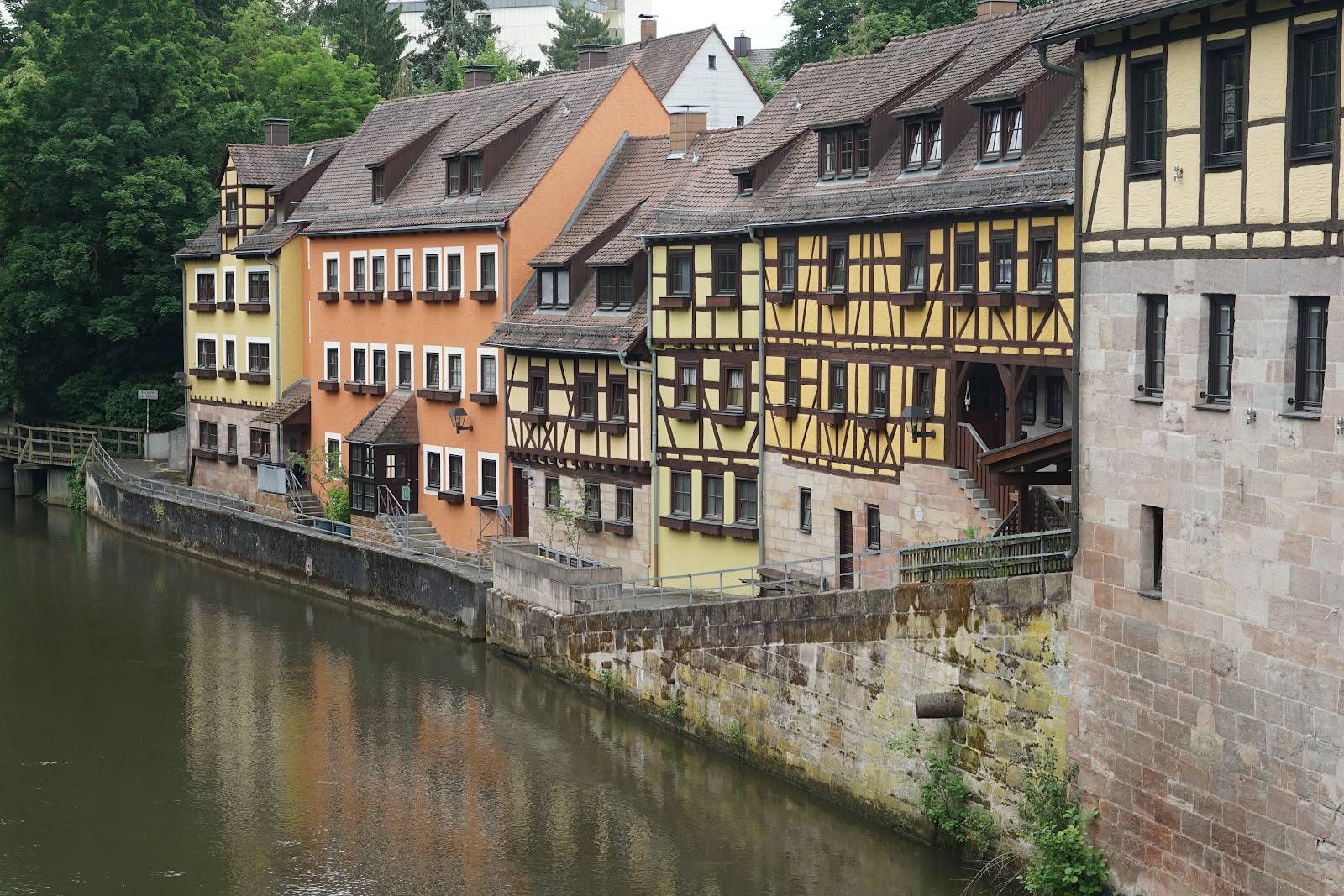









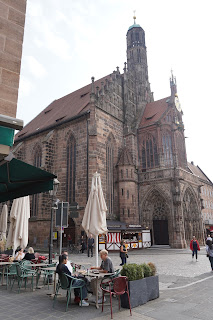


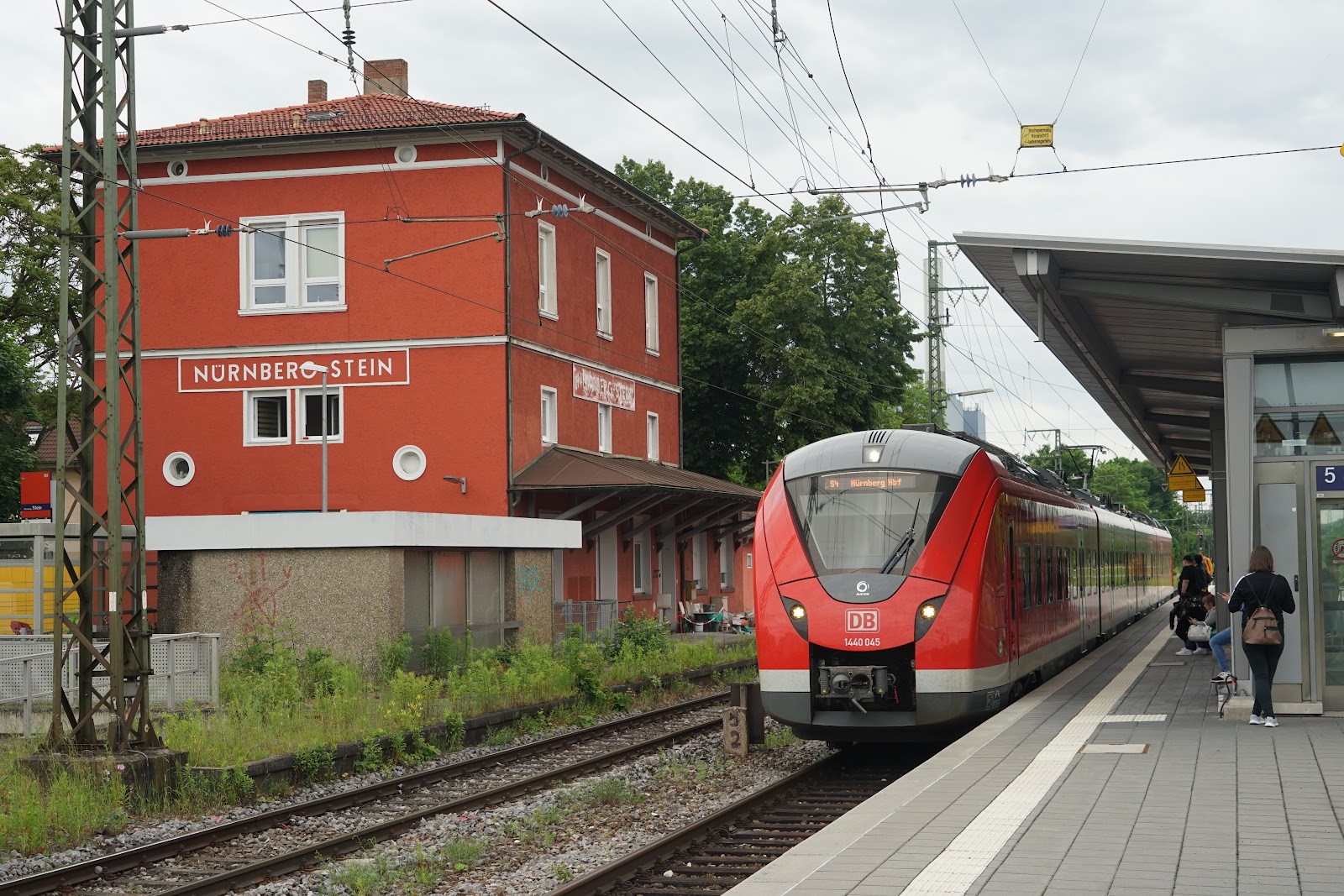
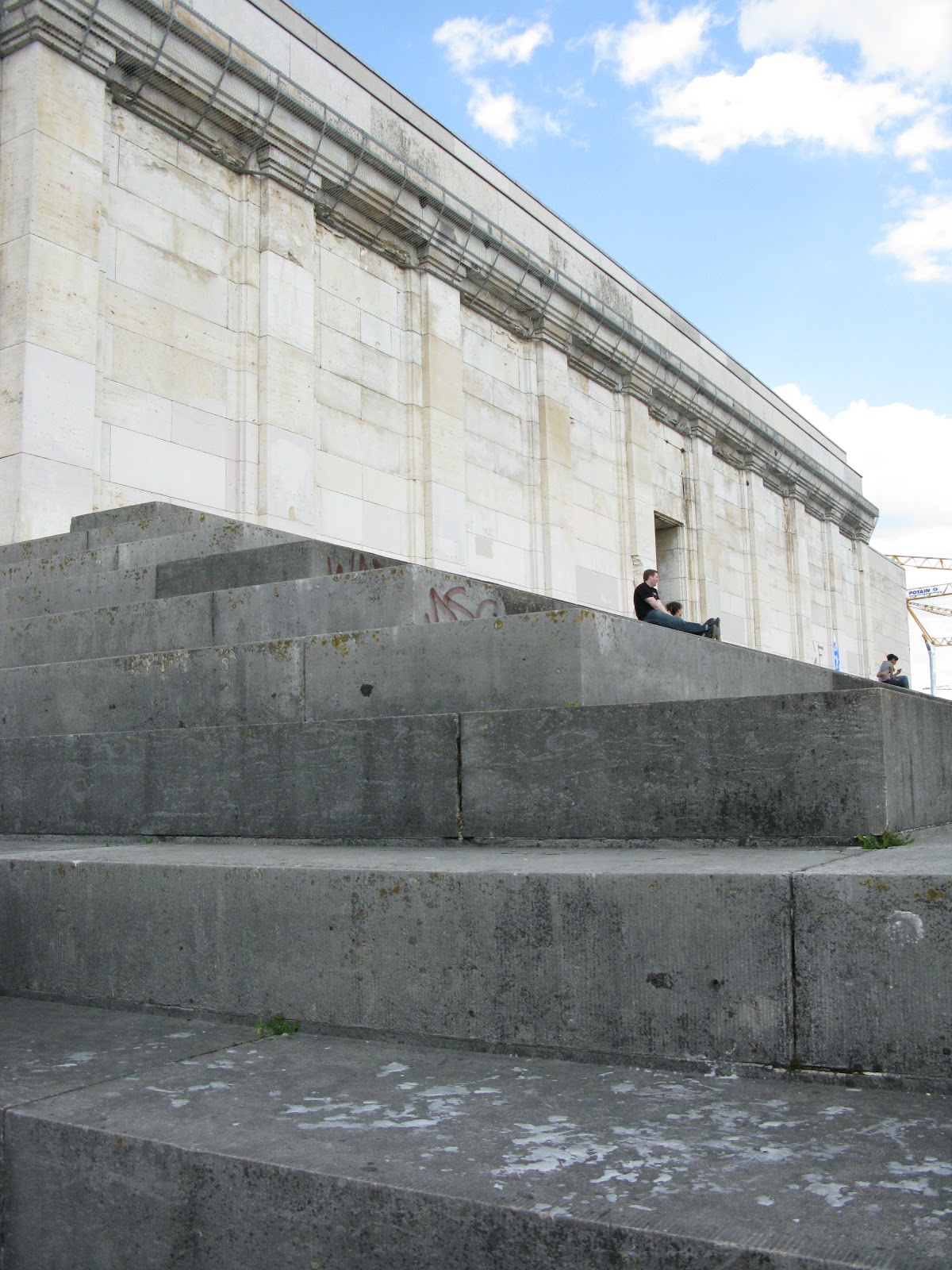

No comments:
Post a Comment